Ignite Your Taste Buds with Homemade Hot Sauce

There’s a certain satisfaction that comes from creating something with your own two hands, especially when it comes to food. And what better way to add a kick to your culinary creations than with your very own homemade hot sauce?
Here at Robert Kline Art, we’re not just passionate about traditional art forms, but also the art of crafting delicious experiences. This easy homemade hot sauce recipe is a testament to that – it’s a simple process with flavorful results that will have you ditching the store-bought bottles for good!
Unleashing the Flavor of Fresh Chiles
 cayenne peppers in green produce pint container
cayenne peppers in green produce pint container
Fresh cayenne peppers ready for homemade hot sauce
The beauty of this recipe lies in its adaptability. Feel free to experiment with different types of hot peppers to craft your unique flavor profile.
From the fruity heat of habaneros to the earthy kick of cayenne peppers, the choice is yours. As a seasoned hot sauce aficionado, I often recommend a blend of peppers for a more complex flavor.
Pro Tip: “When working with particularly hot peppers like ghost peppers, I find it helpful to wear gloves to avoid any lingering heat on the skin,” advises culinary expert, Chef Emily Carter.
A Simple Fermentation Process for Enhanced Flavor
 cutting stems and cutting cayenne peers into pieces
cutting stems and cutting cayenne peers into pieces
Chopping cayenne peppers for homemade hot sauce
Don’t let the word “fermentation” intimidate you. This recipe incorporates a light fermentation process that’s crucial for developing depth of flavor and preserving your homemade hot sauce.
The combination of salt, garlic, and the peppers’ natural heat creates an environment where beneficial bacteria can thrive, enhancing both taste and shelf life.
Crafting Your Homemade Hot Sauce: A Step-by-Step Guide
This recipe is straightforward, requiring minimal ingredients and just a touch of patience.
Gather Your Supplies:
- 8 oz. fresh hot peppers of your choice (stems removed and coarsely chopped)
- 2-3 garlic cloves (peeled)
- 1 teaspoon coarse kosher salt
- 1/4 cup water
- 1/4 cup apple cider vinegar (white wine vinegar or rice wine vinegar work well too)
Let’s Get Started:
- Pulse and Combine: In a food processor, combine the chopped peppers, garlic cloves, salt, and water. Pulse until the mixture resembles a chunky salsa.
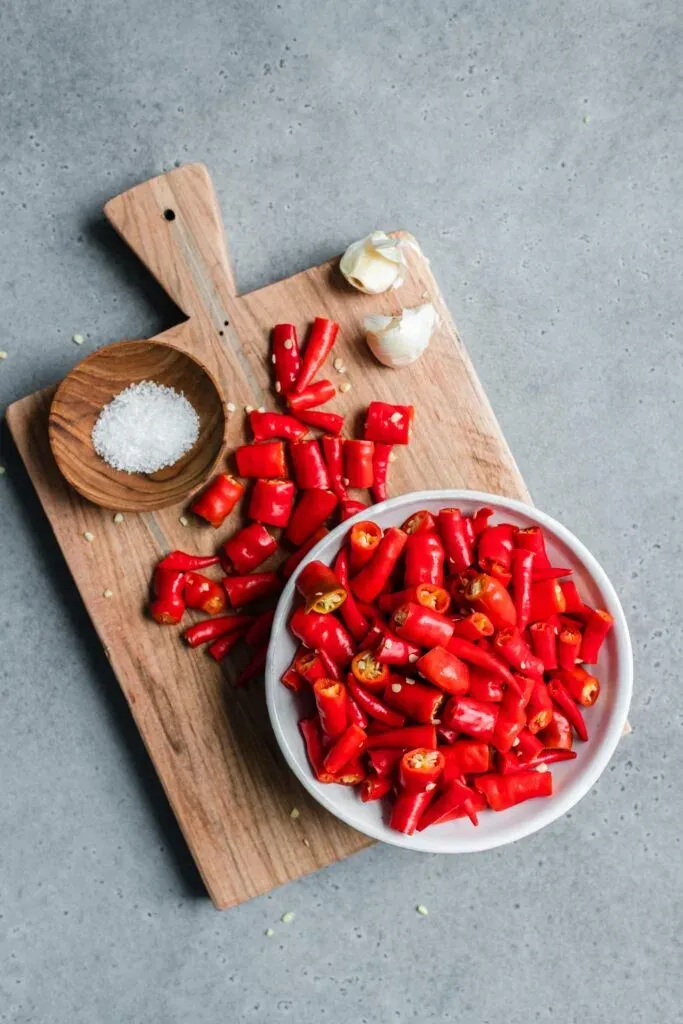 chopped cayenne peppers , garlic, and salt on cutting board
chopped cayenne peppers , garlic, and salt on cutting board
Chopped cayenne peppers, garlic, and salt – the foundation of delicious homemade hot sauce
- Initial Fermentation: Transfer the mixture to a clean glass jar and cover it with cheesecloth, securing it with a rubber band. Allow it to rest at room temperature for 24-48 hours to kickstart the fermentation process.
 chili's chopped in mini-food processor sitting on a cutting board
chili's chopped in mini-food processor sitting on a cutting board
Chili mixture after pulsing in a food processor.
- Vinegar Infusion: After the initial fermentation, stir in your chosen vinegar. Cover the jar again with cheesecloth and let it ferment at room temperature for another 5-7 days. The longer you let it ferment, the more pronounced the flavors will become.
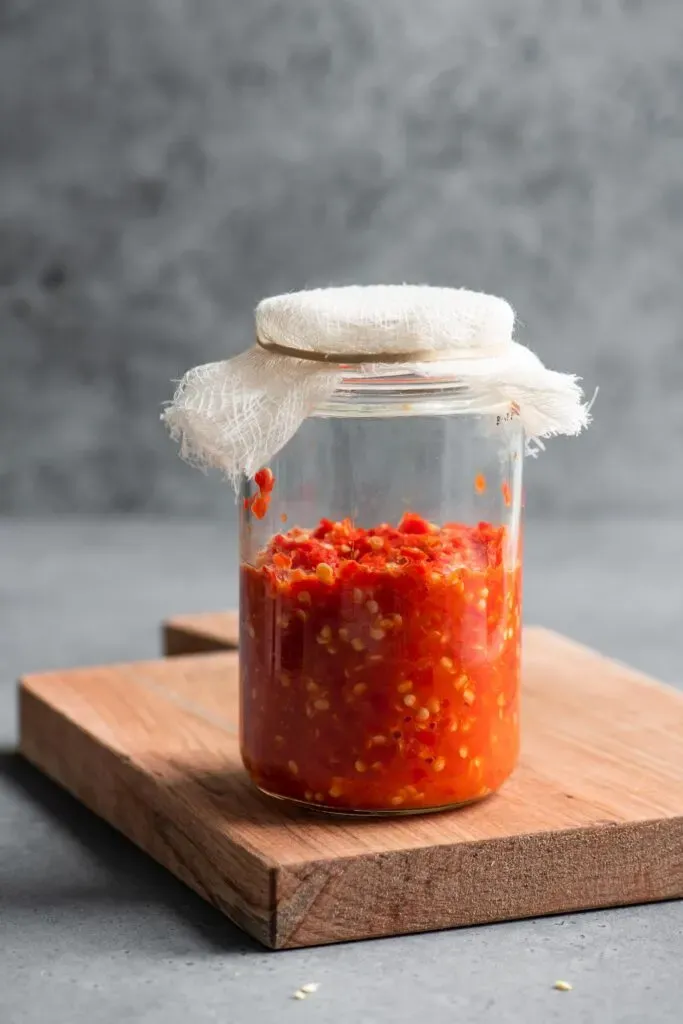 blended chili pulp before fermenting
blended chili pulp before fermenting
Blended chili mixture ready for fermentation
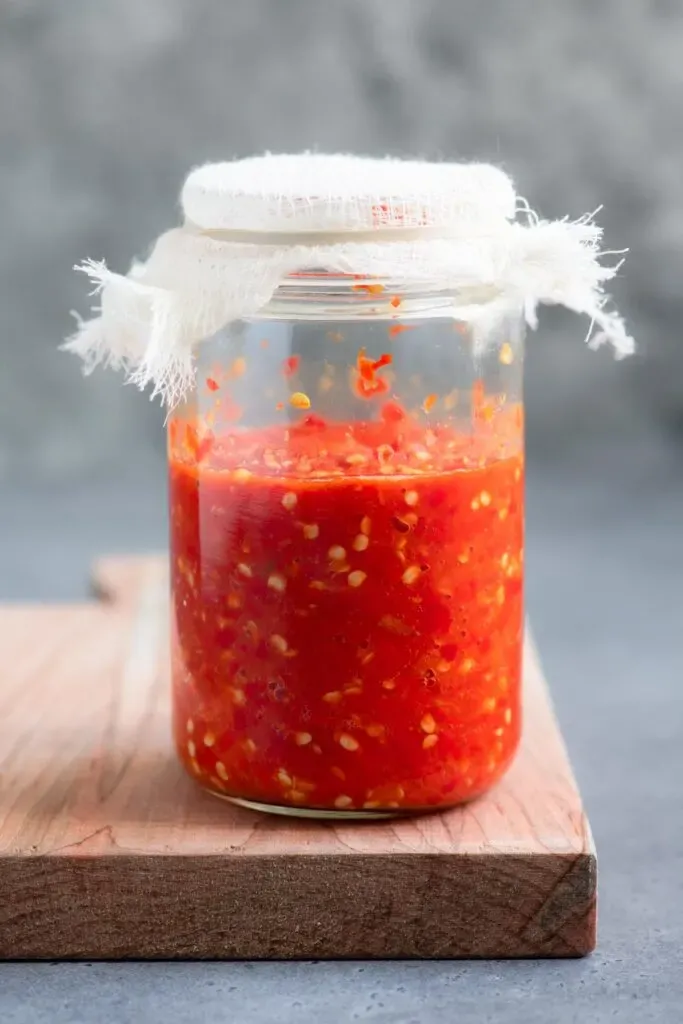 fermented chilies after 1 week
fermented chilies after 1 week
Fermented chili mixture after one week
- Blend to Perfection: Once the fermentation is complete, transfer the mixture to a blender and blend until smooth. For a thinner consistency, you can strain the sauce through a fine-mesh strainer or cheesecloth.
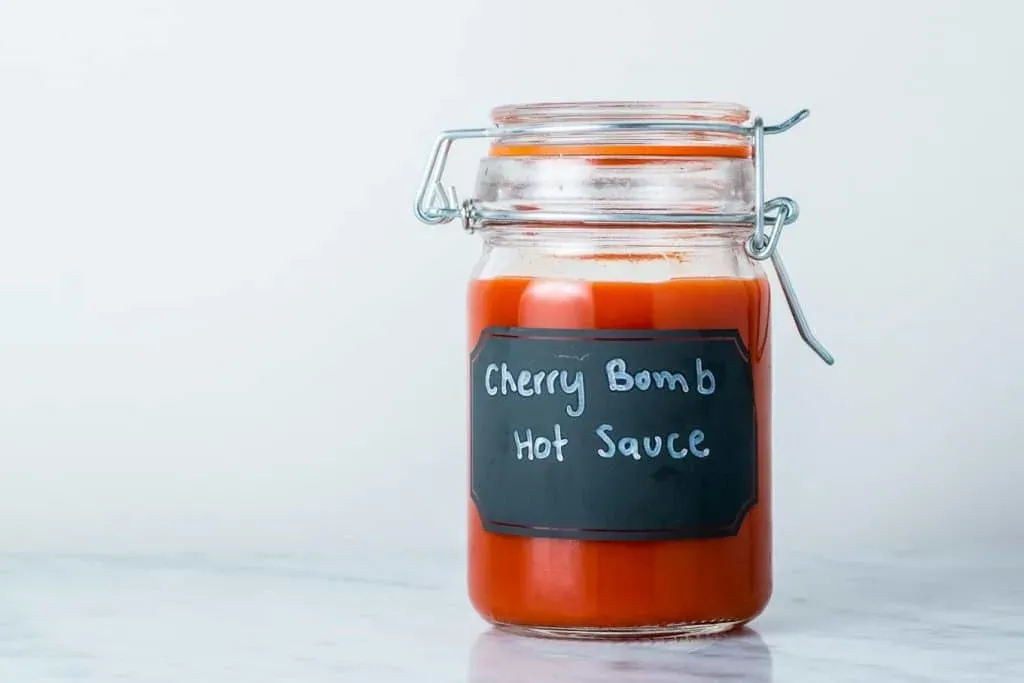 easy homemade hot sauce
easy homemade hot sauce
Blended homemade hot sauce
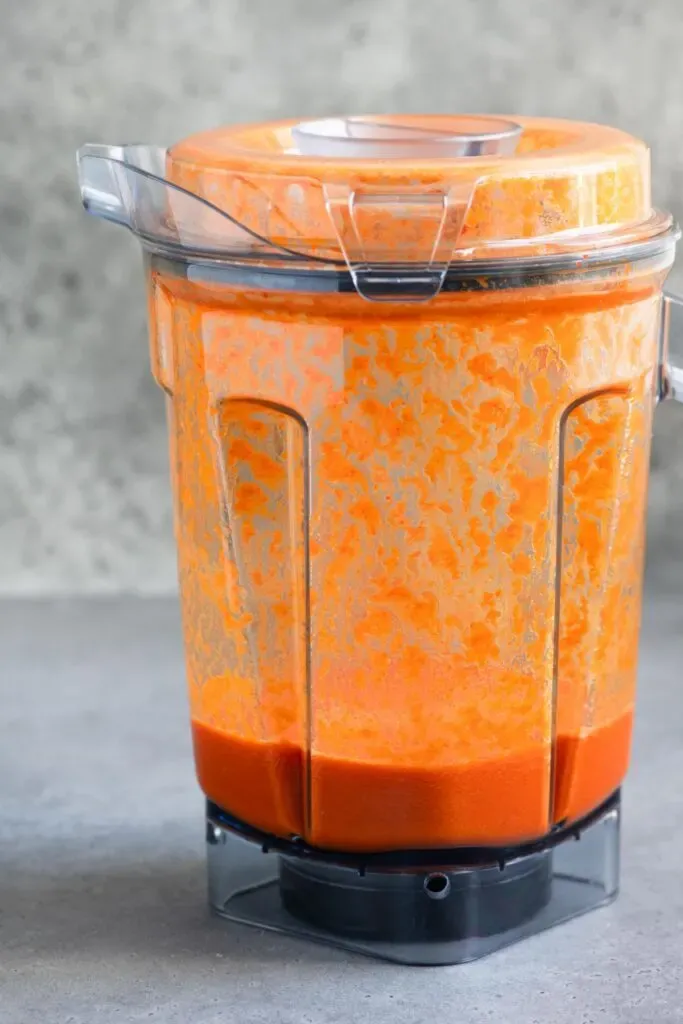 blended hot sauce in blender jar
blended hot sauce in blender jar
Blended homemade hot sauce ready for bottling
- Bottle and Enjoy: Pour your freshly made hot sauce into a clean jar or bottle and store it in the refrigerator. Your homemade hot sauce will last for several months, ready to add a burst of flavor to your favorite dishes.
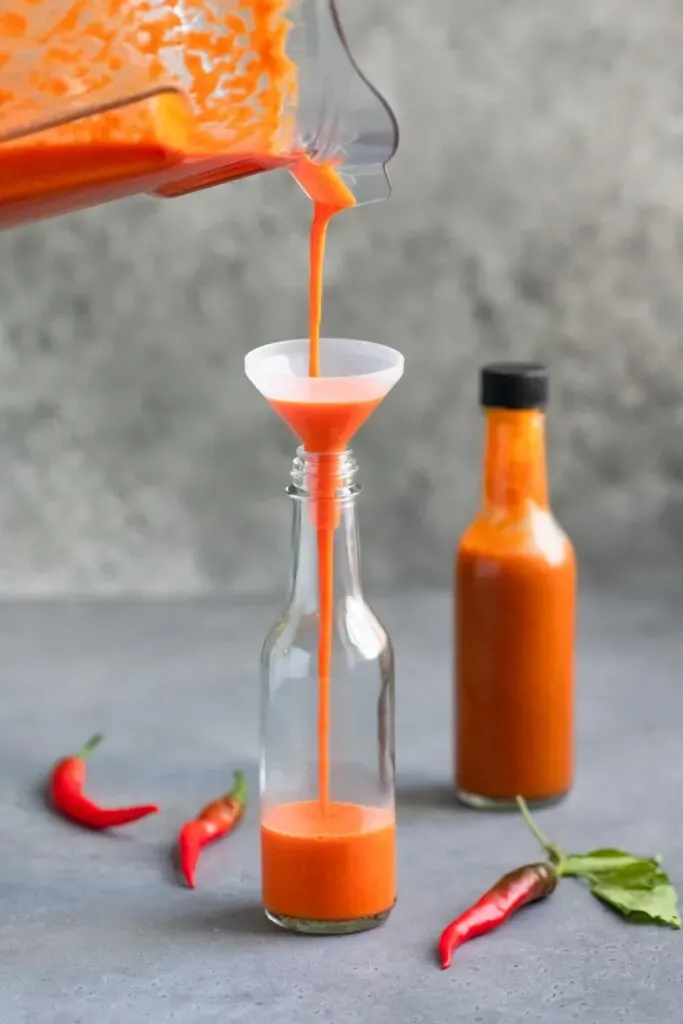 pouring hot sauce into a bottle with a small funnel
pouring hot sauce into a bottle with a small funnel
Bottling homemade hot sauce – the final step before enjoying your creation
 bottled homemade hot sauce on a cutting board with 3 red chilies
bottled homemade hot sauce on a cutting board with 3 red chilies
Bottled homemade hot sauce ready to add a kick to your meals
Customization is Key: Make it Your Own
One of the most exciting aspects of making your own hot sauce is the ability to tailor it to your taste. Here are a few ideas to get you started:
-
Sweeten the Deal: Balance out the heat with a touch of sweetness. Add a small amount of sugar to the final sauce, or incorporate naturally sweet vegetables like carrots or onions during the initial blending process.
-
Spice Up the Flavor Profile: Experiment with spices to add another layer of complexity. Toasted and ground cumin or coriander seeds work wonderfully, while a pinch of ground mustard seed adds a delightful, pungent kick.
 easy homemade hot sauce
easy homemade hot sauce
A versatile condiment, homemade hot sauce enhances the flavor of countless dishes.
- Control the Heat: Adjust the heat level by choosing different types of peppers. Start with milder peppers like jalapeños if you’re new to the world of hot sauce, or brave the fiery heat of habaneros or ghost peppers for an intense experience.
Embrace the Art of Homemade Hot Sauce
Crafting your own hot sauce is a rewarding experience that goes beyond simply spicing up your meals. It’s about experimentation, creativity, and the joy of creating something uniquely your own.
So, gather your ingredients, unleash your inner artist, and embark on this flavorful adventure. Who knows? You might just discover your new favorite condiment!
Ready to explore more handmade creations? Browse our collection of unique and handcrafted gifts on the Robert Kline Art website – perfect for adding a personal touch to any occasion.
